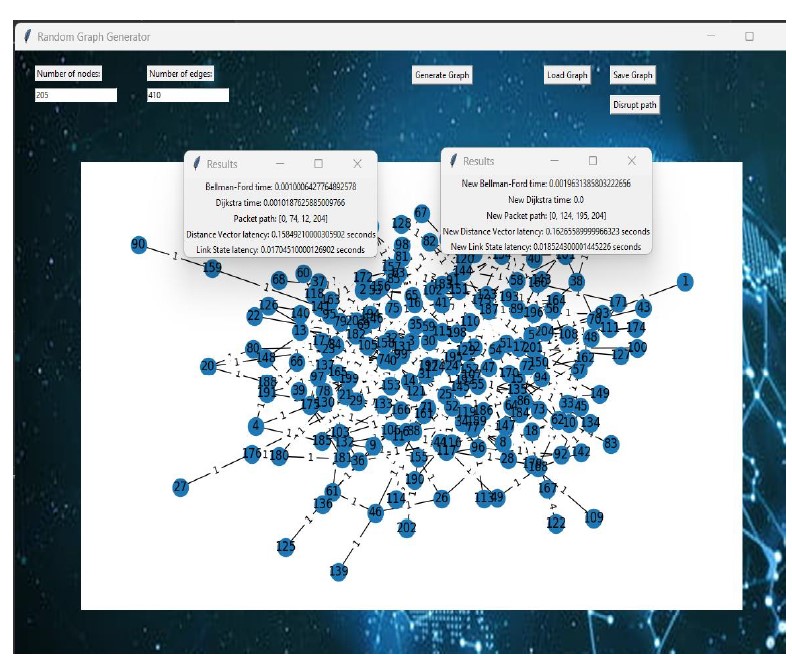
Modelling network disruption in link-state and distance-vector network simulations
The main objective of this study is to compare the performance in the application of the two most important computer network
communication routing protocols at a purely computational level by simulating computer networks in a controlled environment
that allows a comparison in different environments and altering the factors required to cause interruptions in the network
that allow evaluating and analysing the efficiency in the performance of both approaches when drawing a route and reprogramming
another route at home if there is a failure in the network.
The objectives of this project are as follows:
Implement a graphical interface that allows the user to indicate the number of nodes and edges in a network, as well as visualize the resulting network.
Create a certain number of networks, each one more complex, with more nodes and more edges.
Apply to each network different routing algorithms that allow defining the shortest path to transport a packet from the first node to the last one.
Measure the necessary execution time of each of the algorithms.
Collect the results in an excel file to later be able to visualize their evolution using matplotlib.
Analyse the results and compare the efficiency of the different algorithms before and after the network failure.
It was done in 2022.
Technologies:
- -Python /GUI libraries/ ML libraries (NetworkX)
- - Visual Studio Code